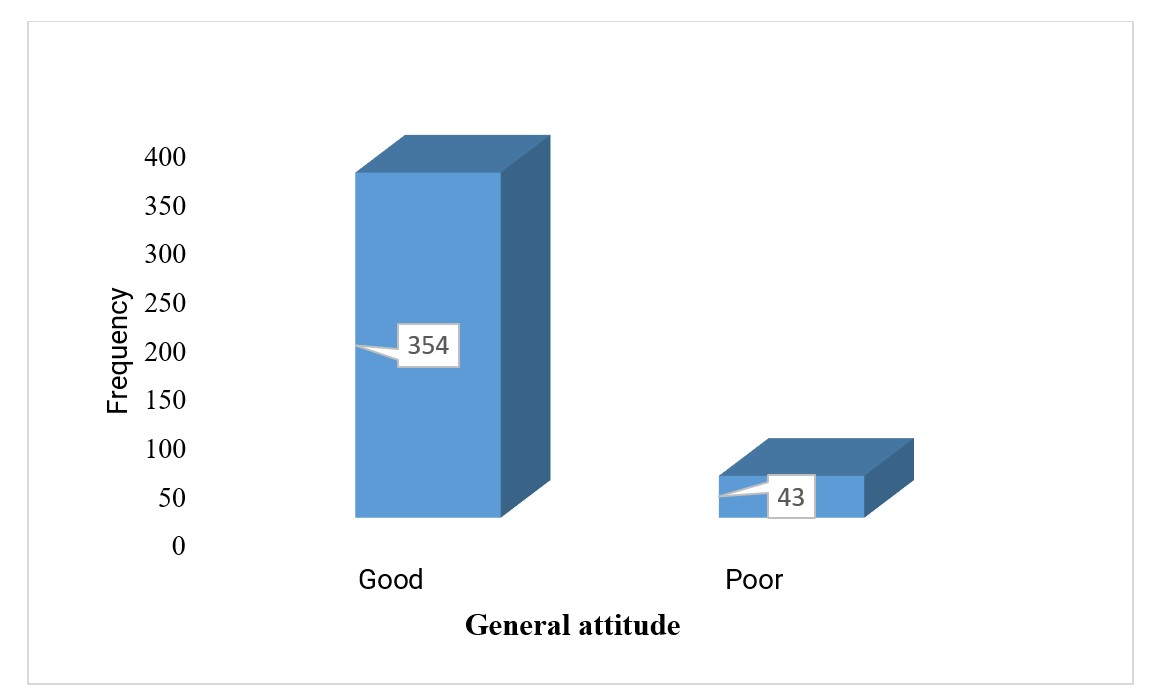Introduction
Breast cancer is a significant global health issue, with early detection being critical for better survival rates and treatment outcomes. Breast self-examination (BSE) remains a key method for early detection among young women, despite its reduced reliability as a diagnostic tool. The World Health Organization (WHO) continues to recommend BSE as a method to raise awareness of breast cancer, supporting secondary prevention efforts [1-3]. In Ghana, despite efforts by non-governmental organizations (NGOs) and international organizations like the Breast Health Global Initiative and Susan G. Komen for the Cure to raise awareness, late presentation of breast cancer cases remains a problem. As a result, many women present with advanced cases where treatment options are limited [2,4]. Nurses play a critical role in promoting early detection, making it essential for them to have the knowledge and attitudes needed to educate others [5-7].
However, a study indicates that less than 50% of university students regularly practice BSE, highlighting a gap between knowledge and practice [8]. Nursing students, who are on the frontline of educating others, show a mixed level of expertise and awareness about BSE. Some misconceptions persist, such as associating breast cancer predominantly with older women and not recognizing its risks for younger women [9]. In fact, around 64% of non-medical students are unaware of breast cancer’s prevalence among women [10,11]. Educational background plays a significant role in shaping attitudes toward BSE, with medical students generally demonstrating a more favorable approach compared to their non-medical peers. Nonetheless, a large proportion of students, both medical and non-medical, either do not practice BSE or perform it infrequently [12-14]. About 58.08% of students, including both medical and non-medical students, had never performed BSE [15]. This low level of practice is exacerbated by cultural perceptions, where some students believe that BSE is unnecessary, a waste of time, or against their cultural beliefs [16].
Research shows a clear correlation between higher levels of knowledge and a positive attitude towards BSE [17, 18]. Medical students, for instance, are more likely to recognize the importance of early detection and demonstrate better attitudes towards BSE, yet their actual practice of it is still low, with only 50% performing BSE at least once a month [19-21]. Furthermore, healthcare workers generally express confidence in their ability to conduct BSE and make informed decisions about early detection methods, but barriers like fear of pain, privacy concerns, and lack of access to mammography services still exist [22-25]. Cultural and psychological barriers also play a significant role in preventing women from engaging in BSE and other early detection practices. Embarrassment, lack of time, fear of discovering something abnormal, and general neglect are some of the main reasons women avoid BSE [26, 27]. These barriers are compounded by structural issues like access to healthcare, insurance coverage, and the availability of mammography services [28-30].
In sub-Saharan Africa, BSE practices are notably low despite widespread awareness campaigns. In Ghana, Nigeria, Sudan, and other countries in the region, the prevalence of BSE practice remains a challenge, largely due to gaps in health education and awareness [31, 32]. While medical students tend to have better knowledge of breast cancer and BSE, the lack of regular practice is still a significant issue [33].
Promoting breast cancer awareness and regular self-examinations is crucial for early detection and prevention, especially among younger women [34,35]. Educating university students—especially those in medical programs about the importance of BSE can significantly impact breast cancer outcomes. Addressing the psychological, cultural, and structural barriers that prevent regular BSE practice is essential in promoting early detection and reducing the incidence of breast cancer in Ghana and beyond [36,37]. Women who perceive themselves as being at higher risk of breast cancer are more likely to perform SBE regularly [38,39]. Belief that SBE can aid in early detection, and positively influence adherence to the practice. Conversely, perceived barriers, such as fear of finding a lump or lack of knowledge on how to perform SBE, reduce compliance [40].
Methods
Study setting
The study was conducted in three tertiary institutions located in Northern Ghana:


